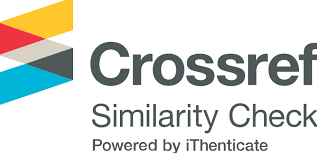Wilt disease of Cinnamomum cassia in nurseries and control measures for diseases management in Lao Cai province
Keywords:
Cinnamomum cassia, disease index,, pathogenicity, disease incidenceAbstract
Cinnamomum cassia belonging to the family Lauraceae is a multi-purpose tree. Previously, only the barks of Cinnamon trees were consumed. Currently, the stem, branches, leaves are sold at high prices. Cinnamon stalks are sold to wood processing factories for boards, flooring, furniture or pillars. The products from cinnamon can be processed into large quantities of valuable commodities. In addition, Cinnamon also contributes to the protection of the ecological environment, preserving and developing the variety of indigenous
precious tree species. Currently, the Cinnamon plantation in our country reached 40,000ha, in Northern Vietnam, Cinnamon mainly distributed in the provinces of Yen Bai, Lao Cai and Quang Ninh. In the coming years, Cinnamon growing area will be expanded in both size and area. With the rapid increase, many Cinnamon nurseries and plantations in some localities are facing the risk of pests and diseases. The death of Cinnamon in the nurseries of Bao Thang district, Bao Yen district, Bac Ha district and Van Ban district of Lao Cai province was identified by Phytophthora cinnamomi and Pythium vexans. For control measures of diseased plants during the nursery period, it is
necessary to apply integrated management such as eliminating infected plants, using fungicides (Ridomil 72WP with the concentration of 0.5-1%; Agrifos 400 with the concentration of 0.5-1% in 4 liters/100m2) were sprayed 2 to 3 times at intervals of 10 to 15 days. When preparing seedlings, we can use some biological products Trichoderma or other bio-preparations that are resistant to pathogenic fungi to control the disease. Before nursing seedlings, the nurseries need to be cleaned, drainage, avoid the flooded beds, disinfected with fungicides calcium carbonate powder. In the process of watering trees, clean water must be used.
References
1. Agrios G.N., 2005. Plant pathology, 5thedition. Elsevier Academic Press: San Diego, California.
2. ANGIS, 2005. BioManager by ANGIS: Australian National Genome Information Services,http://www.angis.org.au.
3. Burgess L.W., Knight T.E., Tesoriero L. và Phan H.T., 2009. Cẩm nang chuẩn đoán bệnh cây ở Việt Nam. Chuyên khảo ACIAR số 129a, 210pp. ACIAR: Canberra.
4. Gardes, M. and Bruns, T. D., 1993. ITS primers with enhanced specificity for basidiomycetes - Applification to the identification of mycorrhizae and rusts. Molecular Ecology 2: 113-118.
5. Hamm B.P. and Hansen M.E., 1987. Identification of Phytophthora spp. known to Attact Conifers in the Pacific Northwest. Northwest Science Vol 61 No 2, p103-109.
6. Hoàng Cầu, 1993. “Phân vùng sinh thái và mở rộng vùng trồng Quế ở nước ta”. Tạp chí Lâm nghiệp số 4, trang 12.
7. Felsenstein, J., 1989. PHYLIP - Phylogeny Inference Package (Version 3.2). Cladistics 5: 164-166.
8. Pearson, W. R. and Lipman, D. J., 1998. Improved Tools for Biological Sequence Analysis. Proceedings of the National Academy of Science, USA 85: 2444-2448.
9. Phạm Quang Thu, Đặng Như Quỳnh, Lê Thị Xuân, Nguyễn Hoài Thu, 2010. “Bệnh héo rũ cây Lim xanh ở giai đoạn vườn ươm và biện pháp quản lý bệnh” Tạp chí Nông nghiệp PTNT số 18, Tr. 75 - 79.
10. Phạm Quang Nam, Nguyễn Minh Chí, Phạm Quang Thu, 2015. “Đánh giá ảnh hưởng của phân vi sinh MF1 đến sinh trưởng và kháng bệnh hại Keo tai tượng và Keo lá tràm trong giai đoạn vườn ươm” Tạp chí Nông nghiệp PTNT số 17, Tr. 119 - 126.
11. Phạm Quang Thu, Đặng Như Quỳnh, Bernard Dell, 2013. “NấmPhytophthora cinnamomi gây bệnh thối rễ Keo tai tượng (Acacia mangium) ở Yên Sơn Tuyên Quang” Tạp chí Bảo vệ thực vật số 3, Tr.3- 9.
12. Phạm Quang Thu, 2016. “Điều tra thành phần loài nấm gây bệnh thối rễ thuộc họ Pythiaceae gây hại Keo tai tượng và keo lai ở các tỉnh miền Bắc Việt Nam” Tạp chí Khoa học Lâm nghiệp Việt Nam số 1 Tr.4251-4256.
13. Phytophthora Technical Group, 2006. Phytophthora Management Guidline. (Second Edition), Government of South Australia.
14. Raeder, U. and Broda, P., 1985. Rapid preparation of DNA from filamentous fungi. Letters in Applied Microbiology 1: 17-20.
15. Thompson, J. D., Higgins, D. G and Gibson, T. J., 1994. CLUSTALW: improving the sensitivity of progressive multiple sequence alignment through sequence weighting, position-specific gap penalties and weight matrix choice. Nuc. Acids Res. 22: 4673-4680.
16. Vũ Văn Định và Phạm Quang Thu, 2011. Bệnh khô cành ngọn Keo tai tượng ở miền Bắc Việt Nam và biện pháp quản lý bệnh. Tạp chí Nông nghiệp PTNT số 23, Tr. 99 - 105.








